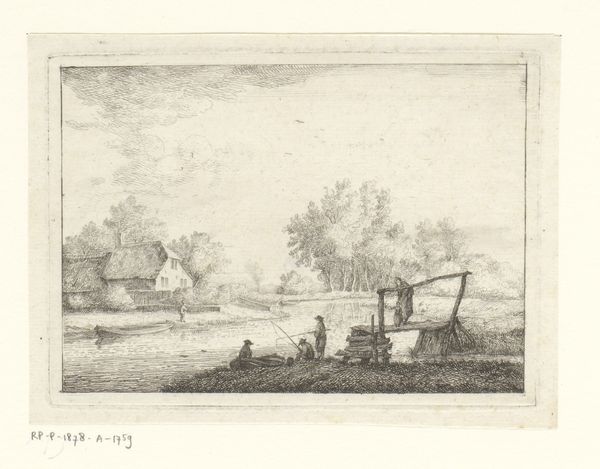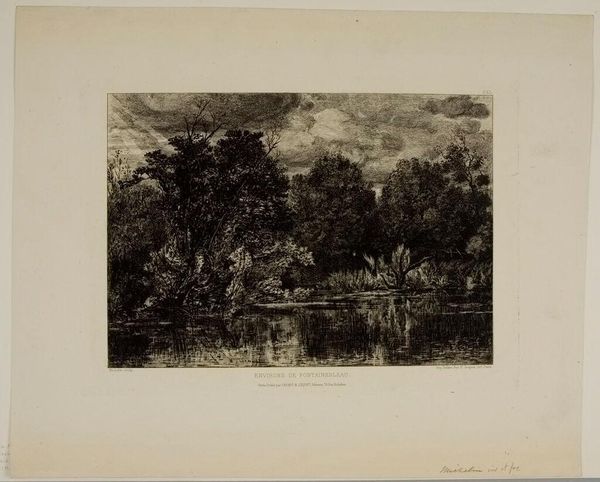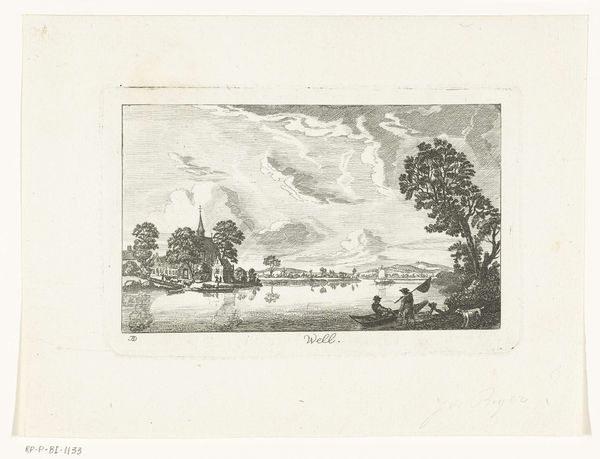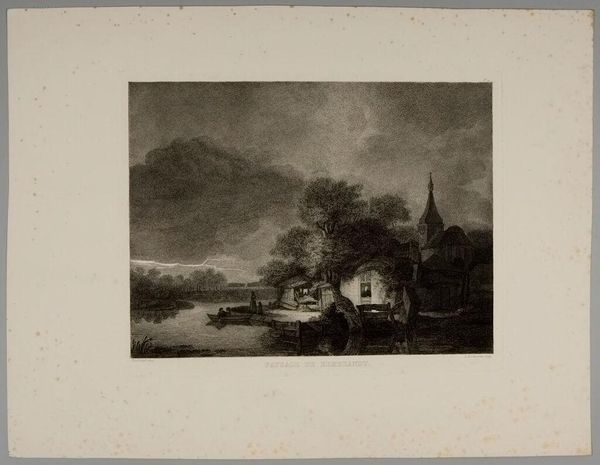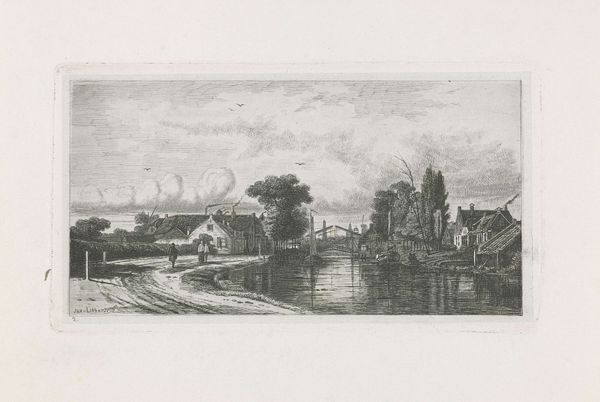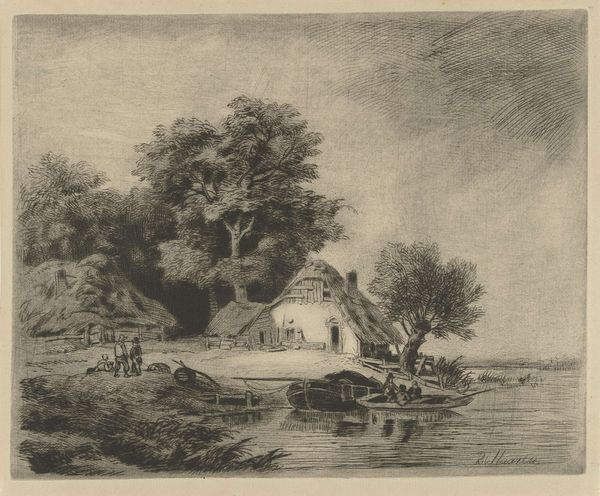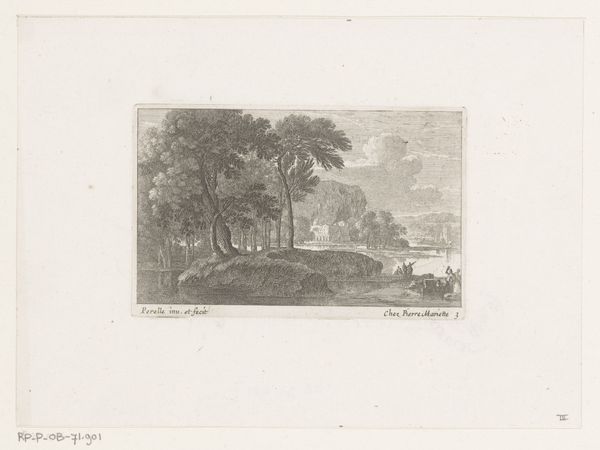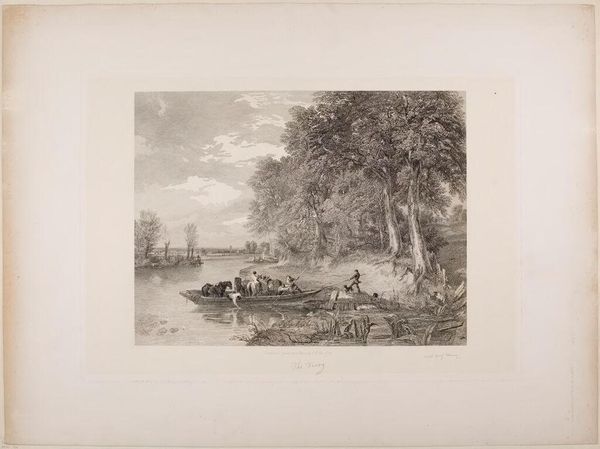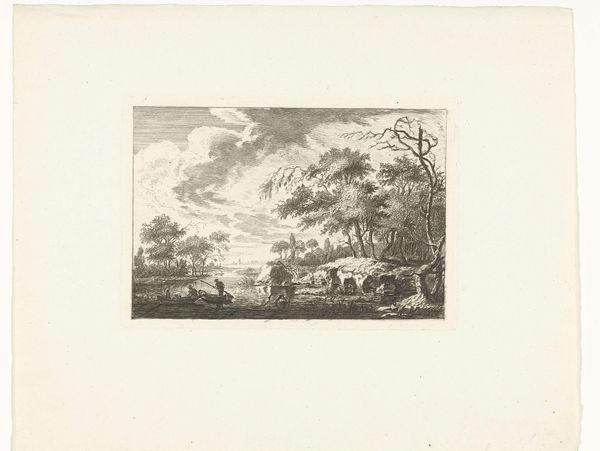
print, etching, woodcut, wood-engraving
# print
#
etching
#
landscape
#
woodcut
#
united-states
#
wood-engraving
#
realism
Dimensions: 5 3/16 x 7 3/4 in. (13.18 x 19.69 cm) (image)8 15/16 x 11 1/2 in. (22.7 x 29.21 cm) (sheet)
Copyright: No Copyright - United States
Editor: We're looking at "The Hay-Wain," a print from 1900 by Timothy Cole, using etching, woodcut, and wood-engraving. The scene is so calm and pastoral, almost idyllic. What strikes you most when you look at this piece? Curator: Beyond the surface-level tranquility, I see a potent commentary on labor and the romanticized view of rural life that often obscures the realities of agricultural work at the turn of the century. How does Cole frame this narrative, and for whom? This idealized scene likely catered to an urban, middle-class audience longing for a simpler past, but disconnected from the strenuous conditions it represents. Editor: That's a fascinating perspective. So, the "idyll" is really constructed by the intended audience? Curator: Precisely. And what's crucial here is understanding whose story isn’t being told. Where are the voices of the farmworkers themselves? Is this serene landscape potentially masking exploitation or class disparities inherent in the system of agricultural labor? The composition feels deliberately constructed to highlight harmony, yet what sociopolitical narratives are lurking beneath the surface? Editor: I hadn't considered the missing voices. Seeing the image as an assertion about class is quite powerful. It makes me think about who gets to define "beauty" and "value" in art. Curator: Exactly. And who profits from it, both literally and culturally. Cole gives us a visually pleasing image, but it is critical to analyze the structures of power represented, and more importantly, unrepresented, in the image to deconstruct dominant narratives that continue to romanticize oppressive labor practices. Editor: That definitely changes how I see the piece. I appreciate how you tied in both history and cultural perspectives. Thanks for sharing your thoughts. Curator: My pleasure. Art like this is never just about the image itself, but about the conversations it sparks regarding identity, power, and representation.
Comments
No comments
Be the first to comment and join the conversation on the ultimate creative platform.
